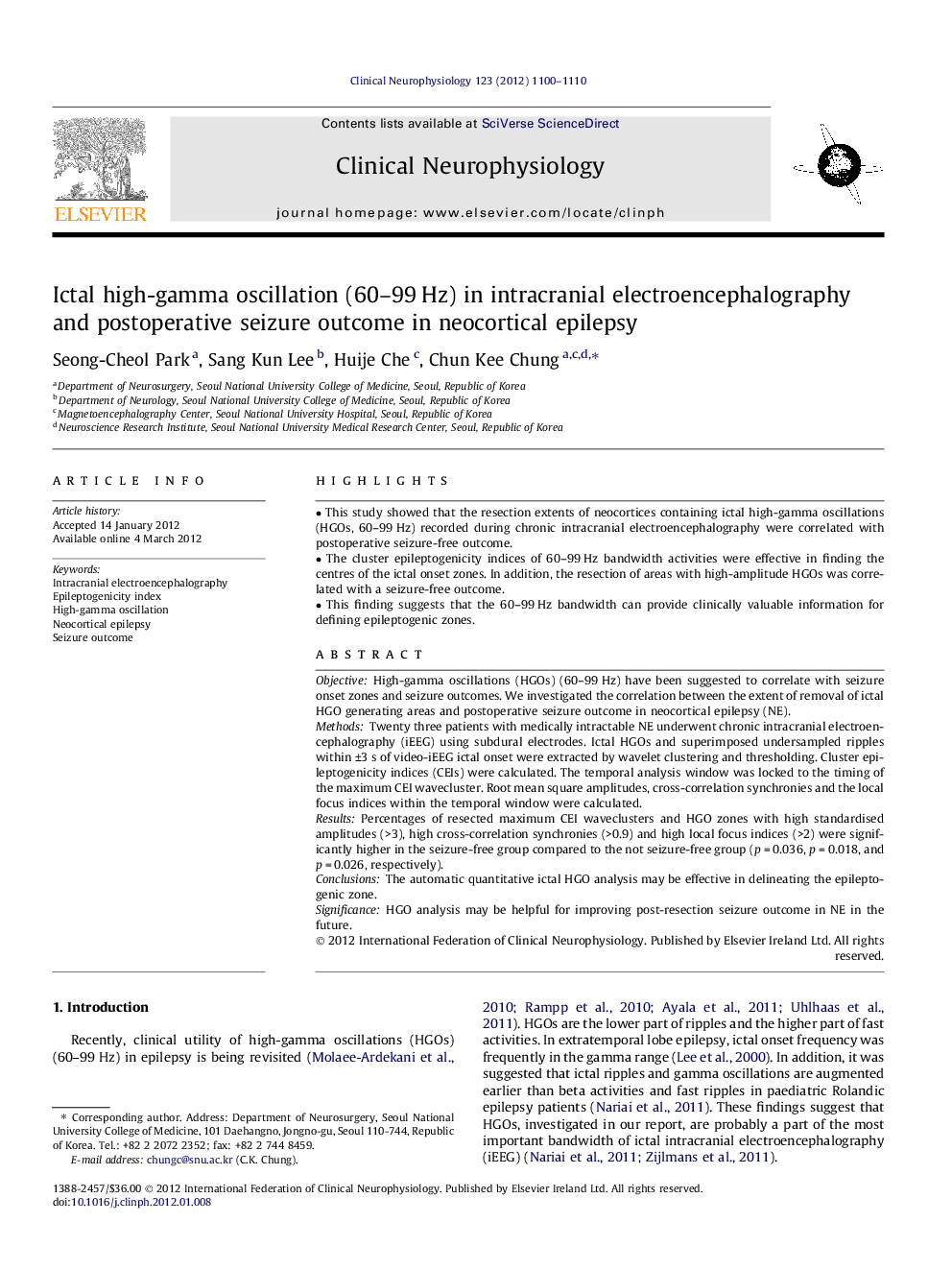| Article ID | Journal | Published Year | Pages | File Type |
|---|---|---|---|---|
| 3045011 | Clinical Neurophysiology | 2012 | 11 Pages |
ObjectiveHigh-gamma oscillations (HGOs) (60–99 Hz) have been suggested to correlate with seizure onset zones and seizure outcomes. We investigated the correlation between the extent of removal of ictal HGO generating areas and postoperative seizure outcome in neocortical epilepsy (NE).MethodsTwenty three patients with medically intractable NE underwent chronic intracranial electroencephalography (iEEG) using subdural electrodes. Ictal HGOs and superimposed undersampled ripples within ±3 s of video-iEEG ictal onset were extracted by wavelet clustering and thresholding. Cluster epileptogenicity indices (CEIs) were calculated. The temporal analysis window was locked to the timing of the maximum CEI wavecluster. Root mean square amplitudes, cross-correlation synchronies and the local focus indices within the temporal window were calculated.ResultsPercentages of resected maximum CEI waveclusters and HGO zones with high standardised amplitudes (>3), high cross-correlation synchronies (>0.9) and high local focus indices (>2) were significantly higher in the seizure-free group compared to the not seizure-free group (p = 0.036, p = 0.018, and p = 0.026, respectively).ConclusionsThe automatic quantitative ictal HGO analysis may be effective in delineating the epileptogenic zone.SignificanceHGO analysis may be helpful for improving post-resection seizure outcome in NE in the future.
► This study showed that the resection extents of neocortices containing ictal high-gamma oscillations (HGOs, 60–99 Hz) recorded during chronic intracranial electroencephalography were correlated with postoperative seizure-free outcome. ► The cluster epileptogenicity indices of 60–99 Hz bandwidth activities were effective in finding the centres of the ictal onset zones. In addition, the resection of areas with high-amplitude HGOs was correlated with a seizure-free outcome. ► This finding suggests that the 60–99 Hz bandwidth can provide clinically valuable information for defining epileptogenic zones.
